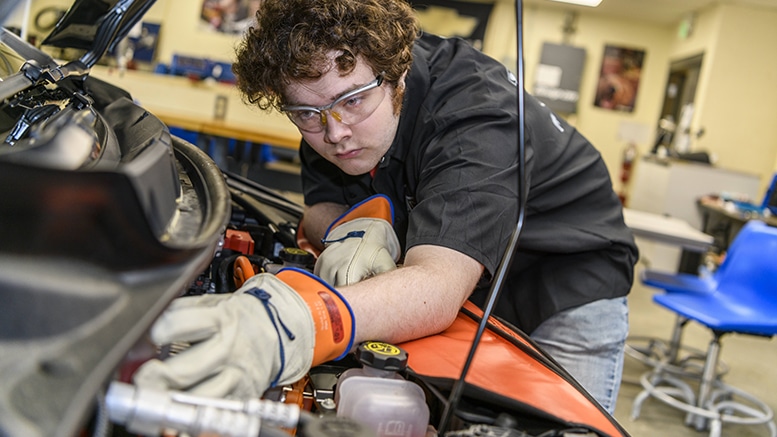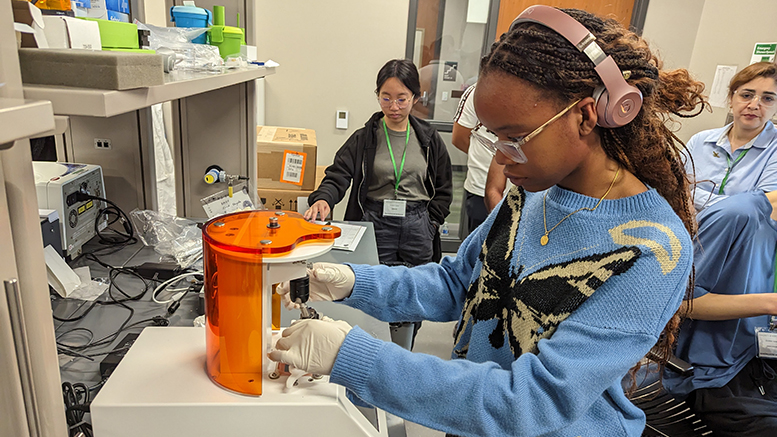Becoming the principal investigator (PI) of an Advanced Technological Education (ATE) program is competitive.
To be a PI, one’s ideas for improving technician education must have received high ratings in the merit review process the National Science Foundation (NSF) uses to consider proposals for improving technician education.
This article comes from the new issue of the Community College Journal, published by the American Association of Community Colleges since 1930.
But upon receiving a grant, the ATE program’s infrastructure encourages PIs, who are generally community college faculty, to learn from each other. The high level of sharing is most evident in the networking sessions and panel discussions at the annual ATE Principal Investigators’ Conference that the American Association of Community Colleges (AACC) convenes each October with NSF support.
As the ATE program marks its 30th anniversary, several PIs’ distinct initiatives in nanotechnology, electric vehicles and quantum technologies are testing ideas for more far-reaching collaborations.
Collaborative, not competitive
Jared Ashcroft, PI of the Micro Nano Technology Education Center (MNT-EC) and instructor at California’s Pasadena City College, would like everyone preparing technicians for semiconductor manufacturing and other micro and nanotechnology employers “to make workforce development a collaborative effort rather than a competitive effort. … Somehow we’ve got to figure out how to create an environment where we’re all working together on the same goal and that’s getting student into those jobs.”
For many years, about 40 micro and nanotechnology educators have met monthly as the Micro Nano Technology Education Special Interest Group to share academic content and troubleshoot challenges; they and other educators have had students access cleanrooms via the Remotely Accessible Instrument for Nanotechnology Network. Both the interest group and remote network were created by other ATE centers.
Now MNT-EC is organizing content from various ATE micro and nanotechnology initiatives into Canvas modules for an introduction to nanotechnology shell and microsystems resource shell.
“What we are trying to do is make it easier for community colleges to use the resources,” Ashcroft said. Faculty can gain access to the free resources by emailing Ashcroft at jmashcroft@pasadena.edu.
The biggest problem all micro and nanotech programs face is not having enough students to meet employer demand. For this, Ashcroft proposes a national network for paid internships based on the Micro Nano Technology Cooperative Undergraduate Research Network (MNT-CURN) that his center developed.
During 2023-2024, MNT-CURN will use NSF funds to provide 90 community college students with paid internships. The students from across the U.S. will attend weekly remote meetings during fall and spring semesters while they work on research-related tasks at their community colleges. In the summer they will work in labs or other research environments.
Ashcroft said 90 paid interns are “a lot but that’s still not enough to even make a dent in the workforce needs … What we need is an internship program that funds 1,000 students a year at $20,000 a pop and use the MNT-CURN model.”
He’s hoping a collaborative proposal for CHIPS and Science Act funding makes it possible for community colleges to do this.
Proliferation of electric vehicles
As electric vehicle production increases, ATE projects are using highly collaborative approaches to address different facets of this emerging industry. Since 2022, the National Electric Vehicle Consortium (NEVC) led by Kevin Cooper, academic administrator at Indian River State College (Florida), has supported the creation of standards and shared best practices.

Meanwhile the Revolutionizing Electric Vehicle Education (REVVED) project has automotive and mechatronics faculty from Trident Technical College, Greenville Technical College and Spartanburg Community College (all in South Carolina) supplying academic content for the augmented reality (AR) and virtual reality (VR) simulations being created at the Center for Aviation and Automotive Technological Education Using Virutal E-Schools (CA2VES), an ATE center at Clemson University.
“What we are trying to do is interject technology into the curriculum to motivate and engage students as well as experienced technicians who want to learn about maintaining electric vehicles,” said REVVED PI Robert W. Elliot. He is the dean of manufacturing and maintenance at Trident Tech.


